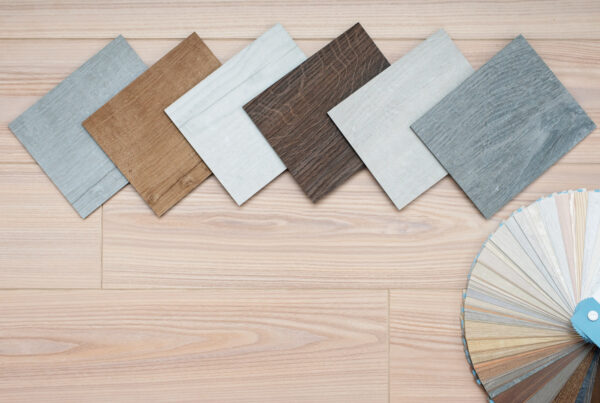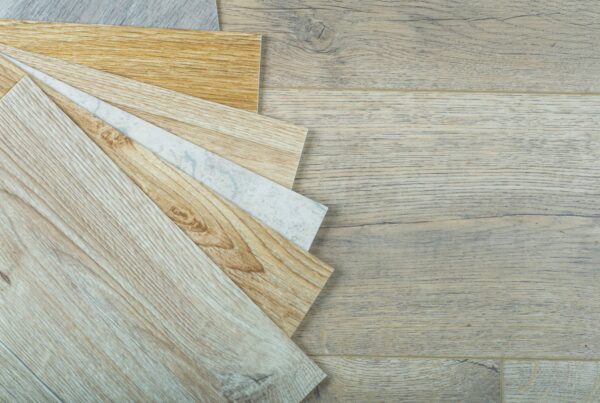When it comes to flooring options, engineered hardwood stands out as a testament to both functionality and aesthetic appeal. Engineered hardwood floors are not just a surface beneath our feet; they embody a fusion of craftsmanship, precision, and sustainability. In this comprehensive guide, we delve into the intricate details that make engineered hardwood floors a timeless choice for homeowners seeking both elegance and durability.
Composition and Layers of Engineered Hardwood
Engineered hardwood is a marvel of construction, combining natural wood with advanced manufacturing techniques. The composition typically comprises multiple layers, each serving a distinct purpose. The top layer, known as the wear layer, consists of real hardwood veneer. This layer provides the authentic look and feel of solid wood, making it indistinguishable from traditional hardwood floors.
Beneath the wear layer lies the core layer, usually made of high-density fiberboard (HDF) or plywood. This core layer lends stability and strength to the flooring, ensuring resistance to warping and moisture. The bottom layer, referred to as the backing, further enhances the floor’s structural integrity.
Wood Species and Aesthetic Choices
One of the key advantages of engineered hardwood is the diversity of wood species available. Whether you crave the warm tones of oak, the rich hues of walnut, or the exotic allure of teak, engineered hardwood offers a vast palette of options. This variety allows homeowners to choose a wood species that complement their interior design preferences and creates a harmonious ambiance.
Engineered hardwood floors are not limited to mimicking the appearance of traditional hardwood. Advanced manufacturing techniques enable the creation of unique finishes, from distressed and hand-scraped textures to sleek and modern looks. This adaptability ensures that engineered hardwood can seamlessly integrate into any design scheme, adding a touch of sophistication to both classic and contemporary interiors.
Precision in Manufacturing Processes
The manufacturing of engineered hardwood floors is a testament to meticulous craftsmanship. From cutting the veneer to laminating the layers, every step requires precision to achieve the desired quality. State-of-the-art technology is employed to ensure that each plank is consistent in size, shape, and finish. This attention to detail results in flooring that not only looks exquisite but also fits together seamlessly during installation.
Incorporating cutting-edge techniques such as laser cutting and computer-guided milling, manufacturers achieve unparalleled precision in creating the intricate patterns and designs seen in engineered hardwood. These technological advancements contribute to the flooring’s durability and longevity, making it a wise investment for homeowners.
Structural Stability and Dimensional Precision
Unlike solid hardwood, engineered hardwood floors are less susceptible to the natural expansion and contraction caused by changes in humidity and temperature. The layered construction mitigates these effects, providing enhanced stability. This dimensional stability makes engineered hardwood an ideal choice for areas with fluctuating environmental conditions, such as basements and kitchens.
The dimensional precision of engineered hardwood also contributes to a more comfortable underfoot experience. The uniformity in thickness and structure ensures a level surface, eliminating the unevenness often associated with solid wood. This attention to detail not only enhances the aesthetic appeal but also provides a consistent and comfortable walking surface.
Design Versatility in Engineered Hardwood
Engineered hardwood breaks the conventional boundaries of flooring design. Its versatile construction allows for wider plank widths and longer lengths, creating a sense of openness in any space. Whether you prefer a classic herringbone pattern or a more contemporary wide-plank look, engineered hardwood provides the flexibility to bring your design vision to life.
In addition to traditional patterns, engineered hardwood opens the door to innovative designs. Chevron and hexagon patterns are gaining popularity, adding a touch of modernity to both residential and commercial spaces. The ability to experiment with diverse layouts gives homeowners the freedom to express their unique style through their flooring choices.
Maintenance and Longevity Considerations
Engineered hardwood floors not only boast aesthetic appeal but also offer ease of maintenance. Regular sweeping and occasional mopping are usually sufficient to keep the floors looking pristine. The protective finish on the wear layer adds an extra layer of resistance to stains and scratches, ensuring the longevity of the flooring with minimal effort.
Choosing engineered hardwood is an investment in durability. The layered construction not only provides stability but also contributes to the floor’s ability to withstand daily wear and tear. With proper care, engineered hardwood floors can maintain their beauty for decades, making them a practical and enduring choice for homeowners looking for a long-term flooring solution.
Engineered hardwood floors go beyond mere durability; they are designed to retain their timeless elegance for generations. The protective finish not only guards against daily wear but also preserves the original luster of the wood. This means that, even as the years pass, the flooring continues to radiate warmth and sophistication.
Sustainable Practices in Engineered Hardwood Production
In an era where environmental consciousness is paramount, engineered hardwood stands out for its commitment to sustainable practices. Manufacturers often source wood from responsibly managed forests, ensuring that the production process does not contribute to deforestation. This dedication to responsible resourcing aligns with the growing demand for eco-friendly flooring options.
The manufacturing of engineered hardwood involves optimizing wood usage, minimizing waste, and recycling by-products. This eco-conscious approach not only reduces the environmental impact but also contributes to the industry’s overall sustainability. Choosing engineered hardwood means making an environmentally responsible choice without compromising on the quality and beauty of the flooring.
Furthermore, the commitment to sustainability within the engineered hardwood industry extends beyond responsible wood sourcing and waste reduction. Manufacturers are continually exploring innovative methods to further minimize their ecological footprint.
Revolutionize Your Space with Flatwater Finishes to Unleash the Timeless Elegance of Engineered Hardwood Floors!
Ready to elevate your living space with the unparalleled allure of engineered hardwood floors? Discover the perfect blend of craftsmanship, precision, and sustainability embodied in every plank. Whether you’re drawn to the timeless appeal of oak or the exotic richness of teak, engineered hardwood offers a world of design possibilities. Experience the Flatwater Finishes difference – where quality meets innovation. Transform your home with flooring that not only captivates but endures. Ready to step into a realm of elegance? Contact us to explore the endless possibilities of engineered hardwood floors and let Flatwater Finishes redefine your living spaces.







